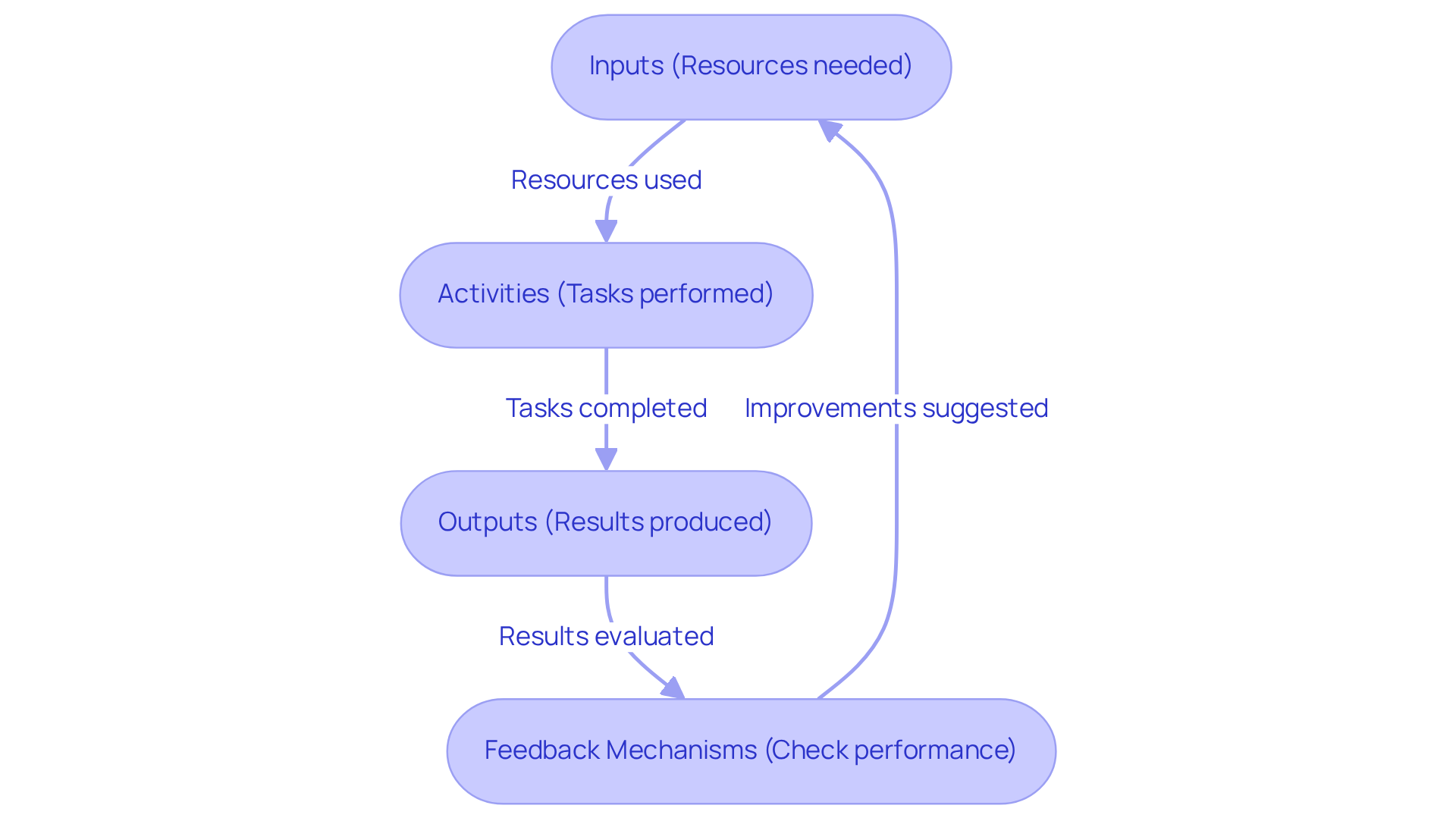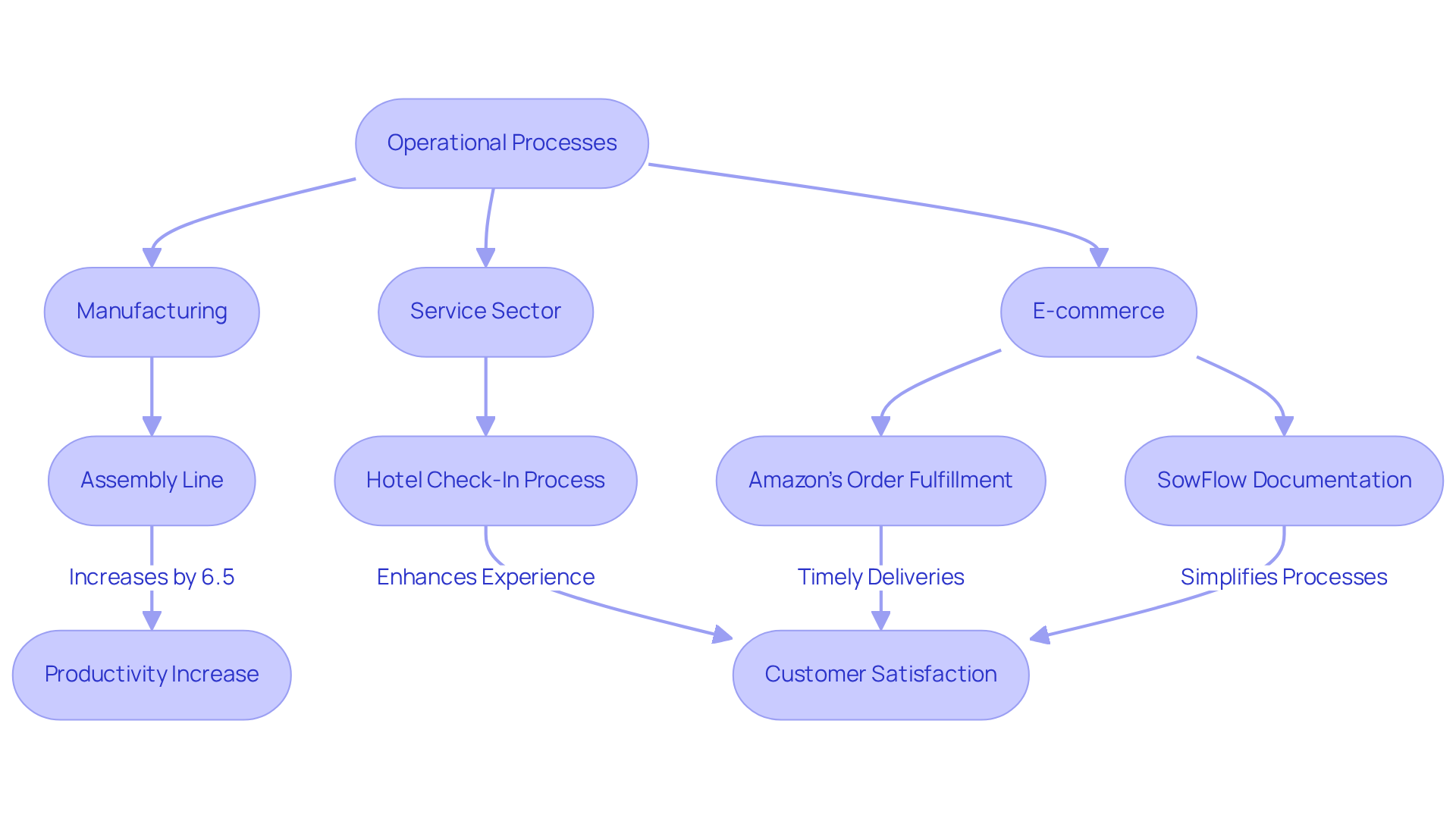
Knowledge Management through Documentation
|
November 22, 2025
|
What Is Operational Process? Definition, Importance, and Examples
Key Highlights:
- Operational processes are a series of actions businesses perform to achieve goals, crucial for smooth operations and linked to strategic objectives.
- Automation simplifies operational activities, improves efficiency, and enhances data collection for better decision-making.
- Inefficiencies in workflows can cost companies over $1.3 million annually, while effective Business Process Management (BPM) can reduce errors by 40%.
- Historical evolution includes shifts from manual labour to automation, with methodologies like Lean Manufacturing and Six Sigma emphasising waste reduction and quality control.
- 74% of IT leaders believe automation can save nearly 50% of their time, though implementation costs can be significant.
- Core characteristics of operational processes include inputs, activities, outputs, and feedback mechanisms, essential for consistency and training.
- Real-world examples show operational processes in action, like assembly lines in manufacturing and streamlined hotel cheque-in procedures, enhancing productivity and customer satisfaction.
- Standardised operational processes lead to heightened efficiency, cost reduction, and improved customer experiences, with BPM linked to a 58.2% workflow improvement.
Introduction
You might be wondering why understanding operational processes is so crucial for any business that wants to thrive in today’s competitive landscape. Well, these processes cover the essential tasks that organizations tackle to reach their goals - everything from production to customer service. They really form the backbone of operational efficiency.
Now, as companies lean more on automation and data analytics to streamline their workflows, a big question pops up: how can businesses effectively measure and improve these processes to dodge those pesky inefficiencies? Exploring this topic not only highlights the importance of operational processes but also uncovers strategies that can boost performance and keep customers happy. So, let’s dive into this together!
Defining Operational Processes: Key Concepts and Importance
You might be wondering what is operational process and what operational activities truly entail. Well, they’re basically the series of actions or tasks that businesses carry out to hit their goals, like delivering products or services to customers. These processes are super important for keeping a company running smoothly and are often tied directly to its strategic operations. They cover everything from production and service delivery to customer support and logistics. Understanding what is operational process is essential, as these functional procedures form the backbone of how an organization operates efficiently and effectively, ultimately impacting profitability and customer satisfaction.
Now, let’s talk about why these functional procedures matter so much. Automation plays a big role in simplifying these activities. It can cut through the complexities and spot opportunities within business operations, boosting overall efficiency. Plus, effective data collection is crucial for how an organization functions and makes decisions. It helps businesses keep an eye on performance and make smart adjustments when needed.
Did you know that companies that don’t work on improving their workflows could be losing a ton of money? Estimates suggest that inefficiencies can cost firms over $1.3 million each year! On the flip side, businesses that have jumped on the Business Process Management (BPM) bandwagon report a 40% drop in errors and better decision-making accuracy. That’s some serious proof of the benefits of streamlined operations!
And there’s more! Case studies really highlight how functional procedures can boost profitability. For instance, organizations that formalize their BPM programs often see better returns on investment. Surprisingly, only 38% of businesses currently measure their BPM efforts in a structured way. This lack of formal measurement can make it tough to spot inefficiencies and limit improvement potential. As the global BPM industry keeps growing - expected to hit $61.17 billion by 2030 - focusing on enhancing workflows is becoming even more crucial for companies that want to thrive in a competitive landscape.

Historical Context: The Evolution of Operational Processes
You might be wondering how functional workflows have evolved since the Industrial Revolution. It marked a big shift from manual labor to machines doing the heavy lifting. Back in the day, workflows were pretty basic, focusing on simple tasks. But then came along methodologies like Scientific Management, which brought a more systematic approach to boost efficiency.
Now, let’s dive into Lean Manufacturing and Six Sigma. These concepts took things up a notch by emphasizing waste reduction and quality control. Fast forward to today, and technology is really shaking things up. Automation and data analytics are now key players in optimizing workflows and ramping up productivity. In fact, did you know that 74% of IT and engineering leaders believe automation can save them nearly 50% of their time? That’s a game changer for what is operational process in terms of productivity!
However, there’s a catch. Implementing automation can set businesses back anywhere from $30,000 to $250,000, which is quite the investment. Plus, experts are predicting that over 7.5 million data entry jobs could vanish in the next five years because of automation. That really highlights the broader implications of these tech advancements. As organizations navigate these changes, they need to find a balance between enjoying the perks of efficiency and managing the potential disruptions to the workforce.

Core Characteristics of Operational Processes: Components and Structure
You might be wondering what is operational process and why it is so crucial, right? Well, they’re all about repeatability, measurability, and hitting those specific outcomes we all strive for. Think of the essential components:
- Inputs (the resources you need)
- Activities (the tasks you perform)
- Outputs (the results you produce)
- Feedback mechanisms (to check how you’re doing)
It’s super important to record these procedures to ensure consistency and make training a breeze.
For example, let’s take a look at a customer service process. It might include steps for handling inquiries, processing orders, and managing complaints. Each step is carefully documented to keep quality and efficiency in check. Did you know that a whopping 83% of employees end up recreating files that already exist? That’s a big red flag for the need for clear documentation! It helps prevent redundancy and boosts productivity.
Organizations that embrace structured documentation practices can significantly reduce the time spent on tasks, which illustrates what is operational process, leading to better overall performance. By laying out a clear structure for workflows, companies can make sure everyone knows their roles and responsibilities. This not only promotes a more effective work environment but also fosters a sense of unity among team members. So, how’s your documentation game? Are you ready to step it up?

Real-World Examples: Operational Processes in Action
You might be wondering what is operational process and how it really makes a difference across various sectors. Well, let’s dive into it! These processes are crucial for achieving effectiveness by understanding what is operational process through organized workflows.
Take manufacturing, for instance. The assembly line is a classic example of productivity in action. Each worker has a specific task, which helps create a smooth path to the final product. This method not only simplifies things but also boosts productivity - manufacturers saw an average increase of 6.5% in key performance indicators from 2012 to 2013. Pretty impressive, right?
Now, let’s shift gears to the service sector. Have you ever thought about the hotel check-in process? It’s a great illustration of how efficiency can enhance customer experience. The check-in involves several stages, like:
- Welcoming guests
- Confirming their bookings
- Handing out room keys
Each step is carefully designed to ensure a seamless and warm arrival for visitors.
Speaking of efficiency, e-commerce giants like Amazon are leading the way with their order fulfillment strategies. They’ve got it all figured out - inventory management, packaging, and shipping - all aimed at making sure deliveries are timely and customers are happy. By leveraging cutting-edge tech and data analysis, Amazon fine-tunes its operations, gaining a competitive edge in the market. For example, effective inventory control can significantly lower holding costs and boost service performance, which is crucial in the fast-paced world of e-commerce.
In this context, let’s talk about SowFlow. It’s a game-changer for improving documentation processes within operational workflows. Anastasia Masadi, a Product Owner, puts it perfectly:
"SowFlow has revolutionized the way we document work and deliver to our clients, allowing me to create SOPs and training materials without the hassle of taking separate screenshots or leaving my browser. This productivity has genuinely restored time to my life."
How cool is that? SowFlow really simplifies SOP creation, enabling teams to concentrate on what is operational process, as well as effectiveness and productivity.
These examples highlight the vital role of business procedures in boosting productivity and customer satisfaction across different sectors. They remind us of the importance of continuous improvement and adapting to the ever-changing market needs. So, what’s your take on these operational processes? Are there areas in your workflow that could use a little boost?

Benefits of Operational Processes: Enhancing Efficiency and Performance
You might be wondering what is operational process and how it relates to implementing effective functional processes that can really make a difference. Well, let me tell you, it offers a ton of advantages! We’re talking about heightened efficiency, cost reduction, and even improved customer satisfaction. When organizations standardize their procedures, they can cut down on errors and streamline workflows, which means quicker turnaround times. For instance, companies that use automated inventory management systems can save a lot of time on stocktaking and order processing. In fact, statistics show that 76% of companies are jumping on the automation bandwagon to standardize their daily operations. It’s clear that everyone’s looking for ways to boost efficiency through workflow standardization.
Now, let’s think about new staff members for a moment. Clearly established procedures can really enhance their training and onboarding experience. When they know what to expect, they can adjust to their roles much faster and start contributing to the company’s goals right away. Studies have found that organizations that adopt business process management (BPM) see a whopping 58.2% improvement in their workflows, leading to better efficiency and happier customers. Plus, 72% of business leaders in Europe attribute improved customer satisfaction to BPM initiatives. That just goes to show how important uniform methods are in enhancing customer experiences.
Speaking of enhancing experiences, have you heard about SowFlow? It’s a game-changer when it comes to creative documentation solutions. With features that make documentation creation and management a breeze, SowFlow helps organizations structure their documents effectively and really implement a solid documentation system. Users rave about the significant time savings they experience, as they can whip up standard operating procedures (SOPs) and training materials without needing to take separate screenshots or leave their browser. In today’s competitive landscape, understanding what is operational process is key to achieving operational excellence and staying ahead of the game.

Conclusion
You might be wondering why understanding operational processes is such a big deal for organizational success. Well, these processes are basically the step-by-step actions businesses take to hit their goals, covering everything from production to customer service. When organizations get how important these workflows are, they can boost efficiency, make customers happier, and ultimately drive up profits.
Now, let’s dive into some key insights. The article highlights how:
- Automation
- Effective data collection
- Structured documentation
can really optimize operational processes. Companies that jump on the Business Process Management (BPM) bandwagon not only cut down on errors but also see big improvements in decision-making accuracy and overall performance. Plus, the way operational processes have evolved - from simple workflows to advanced methods like Lean Manufacturing and Six Sigma - shows just how crucial it is for businesses to keep adapting and innovating as technology changes.
So, what does this mean for you? It’s super important for organizations to focus on refining their operational processes. By doing this, they can boost productivity and enhance the customer experience, all while staying competitive in the market. And speaking of tools, embracing something like SowFlow for streamlined documentation can really help teams zero in on their core tasks. This way, operational excellence stays front and center in their strategic plans.
Frequently Asked Questions
What is an operational process?
An operational process is a series of actions or tasks that businesses carry out to achieve their goals, such as delivering products or services to customers. These processes are essential for the smooth operation of a company and are closely tied to its strategic operations.
Why are operational processes important?
Operational processes are crucial because they form the backbone of an organization, impacting its efficiency, profitability, and customer satisfaction. They cover various activities, including production, service delivery, customer support, and logistics.
How does automation influence operational processes?
Automation simplifies operational activities by reducing complexities and identifying opportunities within business operations, which boosts overall efficiency. It also plays a key role in effective data collection, helping organizations monitor performance and make informed decisions.
What are the financial implications of inefficient operational processes?
Companies that do not work on improving their workflows could lose significant amounts of money, with estimates suggesting inefficiencies can cost firms over $1.3 million annually.
What benefits do businesses experience from Business Process Management (BPM)?
Businesses that implement BPM report a 40% reduction in errors and improved decision-making accuracy. Organizations that formalize their BPM programs often see better returns on investment.
What is the current state of BPM measurement among businesses?
Surprisingly, only 38% of businesses currently measure their BPM efforts in a structured manner, which can hinder their ability to identify inefficiencies and limit improvement potential.
How have operational processes evolved historically?
Operational processes have evolved significantly since the Industrial Revolution, transitioning from manual labor to machine-based workflows. Methodologies like Scientific Management introduced systematic approaches to enhance efficiency, followed by Lean Manufacturing and Six Sigma, which focused on waste reduction and quality control.
What role does technology play in modern operational processes?
Today, technology, particularly automation and data analytics, is crucial for optimizing workflows and increasing productivity. Many IT and engineering leaders believe automation can save them nearly 50% of their time.
What are the potential costs associated with implementing automation?
Implementing automation can be a significant investment for businesses, costing anywhere from $30,000 to $250,000.
What are the workforce implications of automation?
Automation may lead to the disappearance of over 7.5 million data entry jobs in the next five years, highlighting the need for organizations to balance efficiency gains with potential workforce disruptions.
👍
What others are liking
5 Steps to outline your ideal documentation structure
5 MINS READ
Where to start the your journey of mapping out your ideal documentation structure, aligning it with the very heartbeat of your organization?
Defining a winning level of detail in your process
3 MINS READ
What is too much detail, and what is too little? This article described in that winning level detail about what detail is enough.





